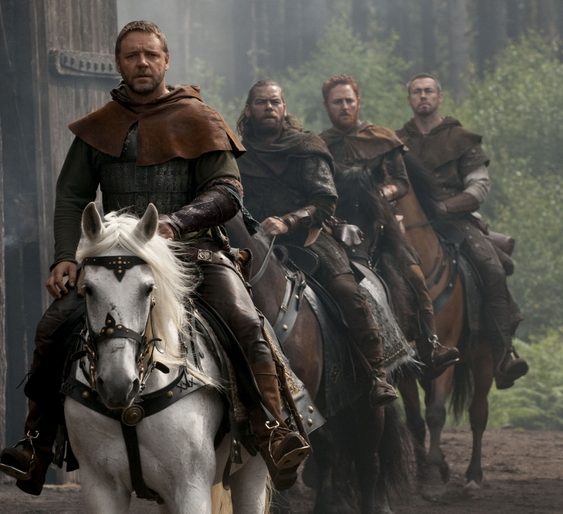A Look at the First Turning Point in Your Novel
We’re about to look at the “10” in my 10-20-30 Scene Builder concept. I suppose I should come up with a better name for this, but haven’t taken the time yet. Maybe you can help me come up with a better name.
But what I’m going to be doing is showing you how you might structure your novel in a practical way. While these thirty scene types represent solid story structure, keep in mind—and I’ll reiterate this numerous times—that this is only one (hopefully fun) way for you to put some structure to all your great ideas for your novel. Or maybe to use as a measure to hold up to your rough (complete or incomplete) draft to see what possible scenes might be missing from your story.
While this doesn’t help to point out the possible superfluous scenes you have that aren’t advancing your plot in a significant way, it will at least show you what scenes you probably should have. Those other scenes—well, they might be just the right transitional scenes. And then again not.
Having a professional critique of your story outline or rough draft is going to be the best way for you to know if you have all the scenes you need and if they’re in the right place and accomplishing something important in your story.
How Many Scenes Do You Really Need to Start Writing?
Elizabeth George, in her terrific craft book Write Away, talks about how a writer should have about ten to fifteen scenes figured out before starting in on writing. That’s going to vary from writer to writer. Some writers, like me, want to have about thirty to fifty scenes roughly figured out (and put on index cards) before diving into writing. I always allow for spontaneous character takeover. Meaning, my characters, as is the way with most well-developed characters, often go riding off in some direction I hadn’t planned. And most of the time they know what they’re doing and I go along for the ride.
It’s important to be flexible, to allow for new scene ideas to pop up. But I’m a stickler for strong structure. So whether you can pull a great novel together with laying out only a dozen key scenes before you start writing, or you need to work up more scenes, know that it’s going to be a tremendous help if you do this “laying out” work before you start writing.
Stop “Pantsing” Already!
You pantsers out there: I don’t know how you are still following my blog (she says, laughing). You know how opposed I am to winging it when it comes to writing a novel.
Seriously, you writers out there who just “can’t plot.” You can. You just don’t want to.
And maybe you love to suffer through wasted months or years of your life throwing out draft after draft and agonizing all the way through (what is supposed to be a fun process!) your novel writing wondering if your story is any good.
So I’m inviting you all—pantsers too—to try this on, this scene building concept I’m presenting. You will find it so much more fulfilling to have efficient and productive writing time so you can actually have a life. Go on trips with your family. Watch the NBA finals. Take hikes with your dog. Smell the roses. You get to do all that with all the time you save when you plot instead of write by the seat of your pants.
Well, I hadn’t gotten up on that soapbox for a while, so I just had to do that. Okay, it’s out of my system now. Let’s move on.
Arbitrary But . . .
The first ten scenes in this layered process are the key ones. Many writing instructors have variations of this. I decided the 10-20-30 sounded well-rounded, balanced. It’s arbitrary. I could give you thirty-seven key scenes or twenty-three. I like round numbers and things that are easy to remember.
Larry Brooks is a great story structure expert (and if you aren’t following his blog Storyfix, you need to!). He’s a proponent of the nine key scenes, and says this:
The number 9 isn’t arbitrary here.
Solid stories have five major milestones, and they unfold in four parts. Do the math . . . that’s nine things—specific turns and essences—that need to be identified, and then broken down into individual scene treatments.
In this post I’m quoting from, he breaks down The Hunger Games into nine sentences, which represent those nine key scenes in the book.
The Five Key Turning Points
Those five major milestones he’s talking about correspond to the five key turning points story master Michael Hauge emphasizes so strongly.
So now that we’ve taken a look at the midpoint and the two pinch points (that’s three turning points, if you’re counting), and we’ve talked about the inciting incident, which you probably already knew something about. That incident comes near the start of the book and is the initial disturbance or “opportunity” (Hauge) that pushes the protagonist in a direction that leads to the formation of the goal for the character (the plot goal for the book).
If I’ve already lost you and you’re new to the story structure game, be sure to take some time and read some blog posts and writing craft books to get a good understanding of this. Be sure, also to read my posts preceding this one so you’re on the same page with the rest of us here.
“Opportunity” Knocks
So let’s look at the first key turning point:
Point 1: “Opportunity.” Yes, this is the inciting incident. Hauge puts it so nicely: “An event occurs that creates desire in the protagonist. Reader gets a glimpse of their longing or need.”
Ah: core need. How often I harp on this. Protagonists (and all main characters) need motivation. We do things for a reason, and your protagonist needs a strong reason to chase after her goal. We bond with characters whose needs are clear. We see what they care about, what they’re passionate about, what they love to do, what they believe in. But underneath all that is the need. A basic, maybe even primal need.
Every great story has this. Scarlett O’Hara needs love. She sure hasn’t a clue what it is or how to get it. But it’s her core need.
Katniss Everdeen needs to protect and care for her family. Her core need means she has to be courageous and self-sacrificing.
What’s your protagonist’s need? If he doesn’t have one, you’re in trouble. I’ve written dozens of posts and chapters in my writing craft books on the protagonist and his core need. Just type in “core need” in the search bar if your core need is to understand this and why it’s crucial to your story! A protagonist without a core need is like a day without sunshine.
Where Does the First Turning Point Occur?
The other thing so important to understand is this inciting incident or opportunity needs to come at the beginning of your story. At about the ten percent mark. If you have a four-hundred page novel (well, you may not yet know how many pages your book will end up having, at this point), that incident is going to show up around page forty. Or sooner.
Too many manuscripts I edit and critique are either lacking that important incident or it’s way far into the story. There might be a hundred pages of backstory first, setting up the characters and premise. Or a lot of unimportant scenes that show the protagonist in his ordinary world. Don’t spend forever getting to that first turning point.
Writers often ask me: Where should I start my story? Easy-peasy. Start right before the inciting incident. Next question?
You don’t need to take all that much time for setup, even in a fantasy novel. You just need enough to introduce the protagonist, her core need, the stakes and conflict for the story (personal and public), and the other key players in the story.
The Hunger Games is a great example. We have the opening scenes showing Katniss with her family, showing the world situation, showing her skill at hunting, showing the two key male characters that will be her love interests. And, boom! The reaping takes place, her sister is chosen for the deadly games, and Katniss volunteers as Tribute in Prim’s place.
So, that’s our first of five key turning points. Since this is already a long post and I’ve given you much to think about, I’ll continue with the other four next Monday.
What is your first turning point in your story? Want to share in the comments? Try giving us first your one-sentence story concept. You can do it!
Feaure Photo Credit: theqspeaks via Compfight cc












Per your comment at the end of the ‘first’ installment of the 10-20-30 series: I do have a first ten scenes mapped out but may have to consolidate some, to tighten it up, according to this. However, I do have my ‘one sentence’ plot done. It goes;
One ‘candidate’ in a hundred survives the ‘training’ of the Makers of Oracles; an evil prince has ordered the murders of her twin sister and their mother, to deprive Aisha of her support system; now, she must be that ‘one,’ to exact her revenge!
Hi Myrna, thanks for joining in here. Well, that sentence is a bit complicated and it’s not clear what Aisha’s goal is for the novel. Is she a candidate in this training? If so, why, and what does she need and want? Who is her direct opposition in the way of her goal?
I am attempting to plot my first novel and I was wondering if you can actually open with the inciting incident, or refer to it. I understand that it needs to be close to the beginning, but if it is the actual beginning, is that too soon?
Hi Rebecca, it depends on the story, but often the inciting incident is the high moment of the first scene. With mysteries, for example, you often have the dead body (or the murder) show up in scene one. Think of all those Castle episodes! So yes, you can certainly start with the inciting incident.
Thanks, Suzanne. That is exactly what it is, a mystery. It is a historical mystery in the Old West. My protagonist is a madam. One of her “girls” wakes up with a corpse, and she knows nothing about it. My MC needs to find out what happened, both for the “girl” involved and for her reputation.
How incredibly helpful today’s post has been.
I’ve read this, or something like it, before, and for some reason it clicked this morning.
While I don’t have my full “one sentence” plot polished yet, I do have the where and when to start:
“Sixteen year old Henry Heath and friends stumble across the U-Boat landing of German spies in the upper Florida Keys…”
Now, to fine tune the the second half of this to succinctly outline their race to get home and get the authorities to believe them.
Goal: Survival
Need: Sound the alarm? Be believed? I’m working on this part now.
Thanks~!
Story structure is something I struggle a little with. There seem to be a few different methods that people say should be used for particular types of fiction, which can get a little confusing at times.
I think getting to understand pinch points, try/fail cycles, etc. is the kind of science we need to understand in order to lay the right clothes on the story.
PS – I like the ABCDE structure best (I think I got that right!)
Concept: What if a group of women form a conspiracy to kill pedophiles?
I’m having trouble with the Premise for my second novel in the series, probably because none of the conspirators is the main character, although one of them is an Antagonist who turns out to be a Contagonist. The Antagonist is the Protagonist’s boyfriend.
Premise: Thirty-five years after her son was kidnapped by his pedophile stepfather, Happy Fields has exhausted all her resources searching for them… to no avail. When Kendy, a new friend, says that she and her many friends can help, Happy accepts without knowing that the women kill pedophiles, but when she discovers that her son is a pedophile, too, and that her boyfriend kills pedophiles and wants to kill her son, she must protect her son at all costs.
First Turning Point: when Kendy offers her help to find Happy’s son, but Happy doesn’t know that the group kills pedophiles yet… the reader does. It’s an ‘opportunity’ turning point.
OR
First Turning Point: when the reader learns that Happy’s boyfriend kills pedophiles and plans on using the women to find the stepfather and when he does, he’ll kill the stepfather, who may be the only link to information about the whereabouts of Happy’s son. (a ‘threat’ turning point)
OR
Both, with the second turning point following right after the first turning point.
First Scene: not really an inciting incident, although Happy’s reaction to the acquittal of a pedophile, in the presence of the boyfriend and Kendy, sets up the third scene, where Kendy offers her help.
The reader doesn’t learn about the boyfriend’s intentions until the fourth or fifth scene.
Tons of questions, of course, but narrowed down to two:
1. Do both the reader and the Protagonist need to know who the Antagonist is at the First Turning Point?
2. Is it possible for the reader to think there are two Antagonists, even though Kendy has a change of heart in Act II and turns out to be a Contagonist?
To answer those two last questions, it really depends on the genre. A mystery is sometimes defined as a story in which the protagonist figures out the answer/killer before the reader does, and a suspense is a story in which the reader learns the key clues and truths before the protagonist does, which makes it suspenseful because the reader screams at the protagonist to warn her as she’s about to walk into danger.
You can create many different types of red herrings, so yes, you can get the reader to believe there are multiple antagonists, and multiple “good guys” who really aren’t good.
I’ve never heard the term “contagonist” or seen it used before, so I don’t know what you’re talking about (the word isn’t in my M-W dictionary . . .).
However there should be some appearance, whether clearly identified or not, of the antagonist and/or his power in that first turning point. In mysteries, you may not know who this is until the end of the novel.
I’m a bit worried about all the pedophiles you have in this story. It’s seems every male character is one. I would be careful not to overdo that. Just one thought upon reading your summary. And I would highly encourage you to have a clear protagonist, which you seem to have. But I’m unclear why you feel it’s necessary she also be a “conspirator” (whatever that might mean). Sounds as if Happy (maybe change that name?) has a clear goal and plenty of obstacles and setback potential with your story idea.
Hi Susanne,
I have struggled somewhat with the “inciting incident” concept as being a single event. Whilst brainstorming over ideas I have come to realise it can be more of a process, or at the very least a two step affair?
1. Inciting incident (upends the protagonist’s world).
2. Call to adventure (where the journey begins)
There are some articles on the web discussing this.
My character’s inciting incident is the death of his father. His world is upended (as it likely would be) but to add to his distress, his father is his last surviving family member and he is alone in the world. When the novel opens he is already in the upended situation (living in his ‘new normal’). The Call to Adventure is when he is asked to mentor a teenager with a dark secret.
In this example: The reaping takes place, her sister is chosen for the deadly games, and Katniss volunteers as Tribute in Prim’s place.
Sister being chosen is the inciting incident. Volunteering is the Call to Adventure.
The two can be seen as one and the same – especially if they happen very close in together, as in The Hunger Games. But in some novels they could be days, weeks apart. Then best seen as two events?
So when you say: “Writers often ask me: Where should I start my story? Easy-peasy. Start right before the inciting incident. Next question?”
I get that. But starting the story is not the same as starting chapter one I believe? Chapter one could hint at the inciting incident in a single sentence but start with The Call to Adventure? Then drip the inciting incident out over the course of the novel or have the protagonist relay it at a suitable time. As an example ‘The Martian’ starts after the inciting incident (although the protagonist does not hold back telling what happened).
You say: ““Opportunity.” Yes, this is the inciting incident.”
I struggle with this because I think the inciting incident creates an opportunity. It is not “the opportunity”?
Michale Hague says: “An event occurs that creates desire in the protagonist. Reader gets a glimpse of their longing or need.”
“An event” that creates “desire” to do something. The event is the inciting incident whilst the desire is the call to adventure. Two separate things?
Apologies if you think I am splitting straws. I am learning and I did get somewhat hung up on this.
I like your thoughts here, Julian. I would say those are two distinct events. The inciting incident (or opportunity) opens the door and requires a reaction. It may not be a call to adventure (good or bad) necessarily. They seem similar. Let’s say a person witnesses a crime and someone spotted him. He now might have to be on the run. That’s a shift in his life as he has to deal with the incident. I wouldn’t say his fleeing or trying to stay alive is “a call to adventure” in the classic hero’s journey sense.